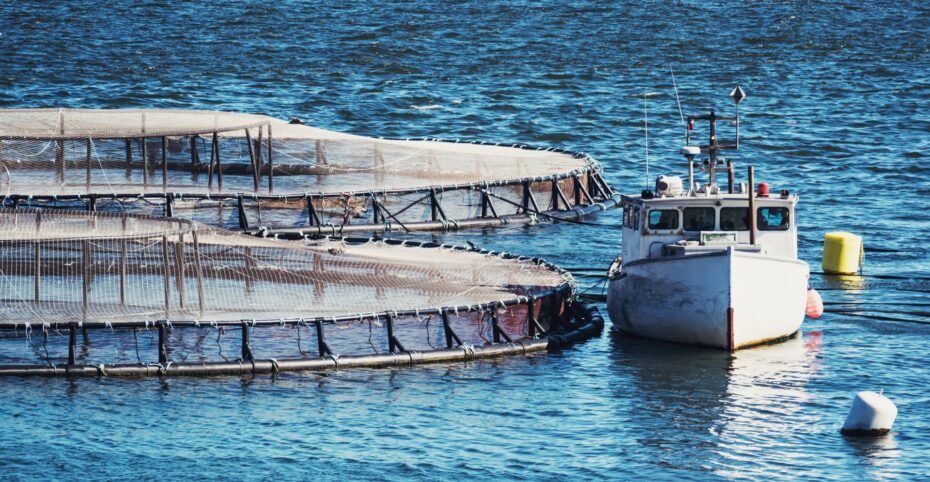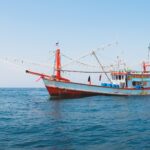You may have heard of aquaculture, but do you know how each system works? Whether it’s freshwater, oceans, or land tanks, they all use different aquaculture systems based on their species requirements, sustainability goals, and more.
Although aquaculture can solve overfishing, more must be done to promote better industry conservation while protecting our aquatic ecosystems.
Learn more about the different types of aquaculture, how each system works, and the necessary strategies to implement for sustainable farming.
A Guide to Aquaculture Systems: How They Work & Strategies Required for Sustainable Farming
There are two main categories of aquaculture: freshwater aquaculture and mariculture (marine).
As the name suggests, freshwater aquaculture farms are located in freshwater bodies like rivers and lakes or on land with tanks. Mariculture farms are in the ocean or along its shores. However, various aquaculture systems are used in both categories to produce fish and aquatic species.
Here’s how each aquaculture system works and how their production processes can improve for sustainable farming.
Recirculating Aquaculture Systems (RAS)
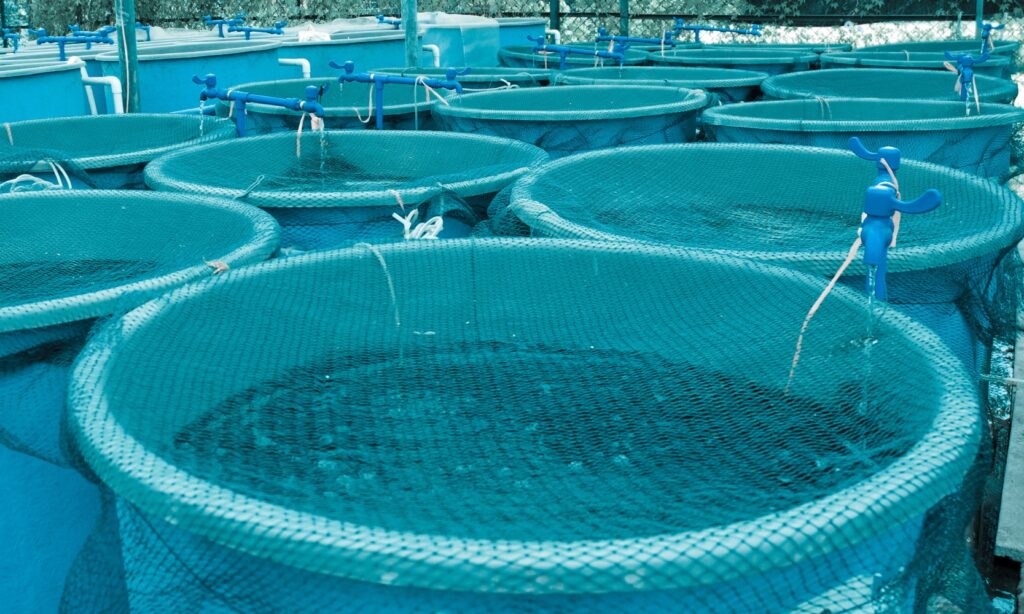
Recirculating aquaculture systems (RAS) use recirculated treated water before it’s released into the surrounding water. They operate using various components, including a fish tank, water filters and pumps, oxygenation devices, and more.
RAS is considered a low-risk aquaculture method because it treats water before discharge, preventing water pollution, toxic algal blooms, and related ecological damage.
However, RAS can improve their production methods with the following:
- Culturing specific species that thrive in an intense RAS environment to prevent stress and harmful animal welfare
- Exposing species in a pre-circulated setting to promote pre-adaptation and reduce the consequences of RAS intensification
- Hiring staff with the technical skills to manage RAS and its technologies effectively
Common species farmed in RAS include sturgeon, striped bass, and Artic char.
Open or Closed Net Pen Systems

Net pen systems use two aquaculture methods: open and closed net pens. Also known as cage culture, net pens are large, net-like cages that produce fish and aquatic species in an open or closed environment.
Closed net pen systems are used for more containment and specific species requirements in natural water bodies. They’re considered a lower-risk method than open net pens because they control the exchange between the aquafarm and the surrounding environment.
Open net pen systems are also in natural water bodies but in uncontained settings to gain environmental benefits like oxygen from ocean currents. However, this free, open exchange poses several ecological problems, such as attracting predators and pollution.
Aquaculture farms with open net pens must invest in the following technologies to prevent these risks:
- Tracking technology to monitor species behavior
- Regular barrier inspections to reduce escapes of non-native species
- Moving open net pens from nearshore to offshore for better regulation of the exchange between aquafarms and the surrounding environment
Below is a quick overview of the different locations where net pen systems are used and how aquaculture farms can optimize production methods for sustainability.
Offshore Net Pens
Net pens systems located offshore are deep in natural water bodies like the open sea. However, aquafarms must submerge their net pens to specific depths for the species they’re culturing and secure them with special anchors to maintain their positions.
Nearshore Net Pens
Net pen systems located nearshore are placed along the coastline or near them. It’s considered a high-risk aquaculture method because of insufficient water flow. Even exchanging treated water can accumulate on the coast from by-products in net pens, like fish waste and water treatment chemicals.
As mentioned above, moving net pens from nearshore to offshore or on land with water tanks is a lower risk. Deeper natural waters have stronger currents to promote more water flow, and on land, you can control the water tank’s setting.
Tank Culture

Tank culture is an aquaculture system that uses large water tanks on land. It’s designed to minimize wastewater discharge and reduce ecological risks using land tanks in a controlled environment. Common species farmed in tank culture include oysters and catfish.
It’s a low-risk aqua farming method because the tanks aren’t placed in natural water bodies and are closed, preventing issues like negative wildlife interactions and disease transfer. However, since tank culture is a manmade system, aquafarms must adhere to industry regulations for optimal animal welfare.
Raceways
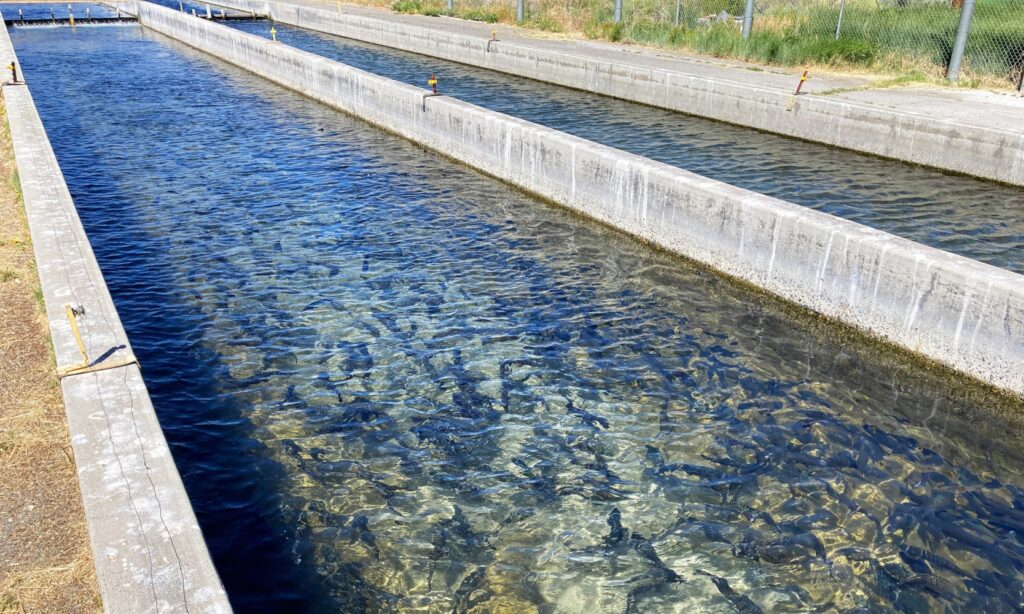
Raceways are aquaculture systems that divert flowing water from natural streams or wells. It uses channels, typically made of concrete with basins or canals. The species farmed in raceways is typically rainbow trout.
It’s considered a low-risk aquaculture method because its water must be treated before release, and it’s a closed environment to prevent fish from escaping. However, aquafarms utilizing raceways must ensure the inflowing water is at the set temperature for the species they produce and has a high enough elevation for the water to flow constantly.
Aquaculture Pond Farms
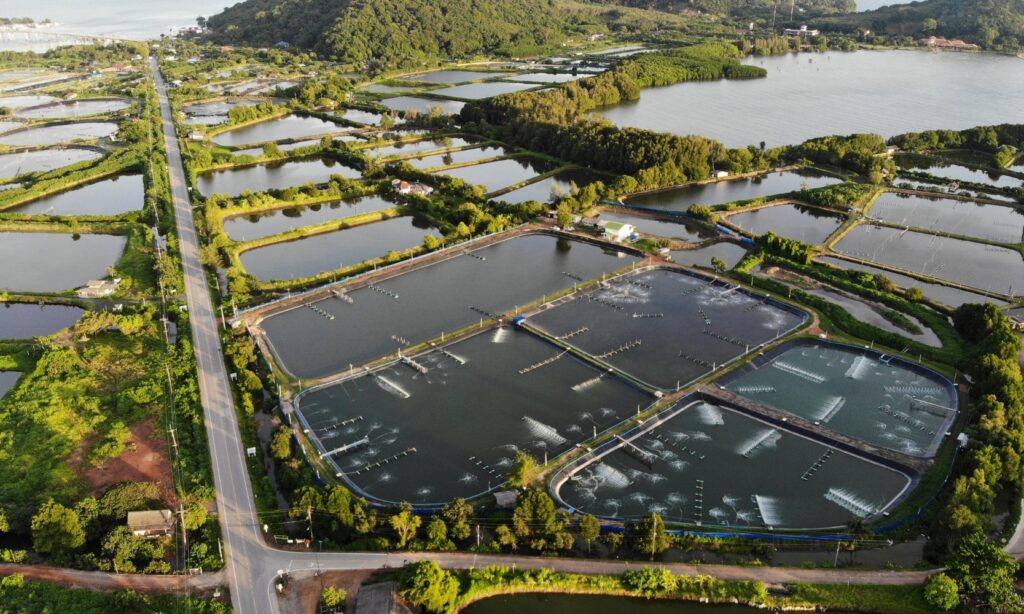
Aquaculture pond farms are either in semi or fully-enclosed natural water bodies. They line their systems with plastic or clay to produce aquatic species and fish in a self-sustaining setting. Common species cultured with this method include tilapia and shrimp.
However, to reduce environmental risks, aquaculture ponds must implement the following:
- Water treatments before discharging it into the surrounding water to prevent ecological damage, like mangrove destruction—a leading cause of wild habitat damage from shrimp aquaculture ponds
- Retention and detention ponds to re-capture escaped fish from disrupting native gene pools
- Non-chemical-based cleaning products for fish waste and vegetable-based fish feeds without heavy metal contaminants
- Water conservation technologies to maximize utilization of scarce pond sources
Suspended Aquaculture

Suspended aquaculture is a system where farmers usually use mesh bags, ropes, or plastic trays and suspend them in the water or on the coast. Since this type of aquaculture produces shellfish that are natural filter feeders, they only require clean water in this environment.
It can be considered a low-risk method if it’s located in water bodies with sufficient water flow and produces species native to the area. Common species farmed in suspended aquaculture include oysters, scallops, and mussels.
Support SIAA’s Mission for Sustainable Aquaculture & Protecting Our Aquatic Ecosystems
At SIAA, we’re a non-profit organization dedicated to elevating aquaculture practices worldwide while safeguarding our aquatic ecosystems. We closely partner with industry leaders, like the Federation of European Aquaculture Producers (FEAP), to advocate for sustainable innovations in the aquaculture industry for lasting change.
But we need your support to achieve our mission.
Giving a one-time or sustaining donation helps fund our impact and lobbying efforts to change the future of aquaculture and preserve biodiversity for future generations.
Learn more about our missions or become an SIAA member today!

